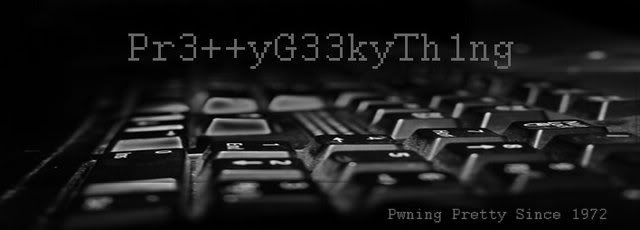 I keep finding myself cool before the times catch up with me. When Dungeons and Dragons finally becomes a game the cool kids play, I'm all set.
I keep finding myself cool before the times catch up with me. When Dungeons and Dragons finally becomes a game the cool kids play, I'm all set.For years now, I've been frustrating loved ones and co-workers by never checking my email. My current phone number doesn't even have it set up yet, nor will it ever.
I can see who called and I can call back.
I'm skipping half a dozen steps involved in listening to and deleting voicemails.
My work voicemail box has been full for over eight months and there isn't even a call log on that thing. Those calls will never be returned.
No one has missed it.
http://www.nytimes.com/2009/04/02/fashion/02voicemail.html?ref=personaltech
The text from page 1:
WHEN Steve Hamrick left his last job as manager at a software corporation, he had at least 25 unheard messages in his office voice mailbox. And that’s not counting the unreturned calls on his cellphone or landline at home.
It’s not that he doesn’t like to talk. But with the cascade of messages he receives by e-mail, texting and on Facebook, Mr. Hamrick, 29, a self-described “voice mail phobic” from Cupertino, Calif., said he’d found better ways to keep in touch.
“I had to give up something and that, for me, was voice mail,” he said. “It’s cutting out some forms of communication to make room for the others.”
When it was introduced in the early 1980s, voice mail was hailed as a miracle invention — a boon to office productivity and a godsend to busy households. Hollywood screenwriters incorporated it into plotlines: Distraught heroine comes home, sees blinking red light, listens as desperate suitor begs for another chance to make it all right. Beep!
But in an age of instant information gratification, the burden of having to hit the playback button — or worse, dial in to a mailbox and enter a pass code — and sit through “ums” and “ahs” can seem too much to bear.
Many dread the process or, like Mr. Hamrick, avoid it altogether, raising the question: is voice mail on its way to becoming obsolete?
“Once upon a time, voice mail was useful,” said Yen Cheong, 32, a book publicist in New York who has transitioned almost entirely to e-mail and text messaging. According to her calculation, it takes 7 to 10 steps to check a voice mail message versus zero to 3 for an e-mail.
“If you left a message, I have to dial in, dial in my code,” Ms. Cheong said. “Then I mess up and redial. Then once I hear the message, I need the phone number. I try to write it down, and then I have to rewind the message to hear it again,” she added, feigning exhaustion.
Tim Kassouf from Baltimore, 24, who calls himself “a certified voice mail hater,” said he had 68 messages, 62 of them unheard, in his cellphone mail box. Scott Taylor, 41, a senior manager at an e-commerce company in Phoenix, said voice mail was “just totally an ineffective communication method, almost ancient now.”
Like many others, Mr. Taylor advises callers on his outgoing message to try his cellphone or to send an e-mail message if they need to reach him right away.
It is good advice. Research shows that people take longer to reply to voice messages than other types of communication. Data from uReach Technologies, which operates the voice messaging systems of Verizon Wireless and other cellphone carriers, shows that over 30 percent of voice messages linger unheard for three days or longer and that more than 20 percent of people with messages in their mailboxes “rarely even dial in” to check them, said Saul Einbinder, senior vice president for marketing and business development for uReach, in an e-mail message.
By contrast, 91 percent of people under 30 respond to text messages within an hour, and they are four times more likely to respond to texts than to voice messages within minutes, according to a 2008 study for Sprint conducted by the Opinion Research Corporation. Even adults 30 and older are twice as likely to respond within minutes to a text than to a voice message, the study found.
There are no definitive studies of how many voice mail messages American leave compared with earlier periods, but if the technology is heading toward obsolescence — as many communication experts suspect — the trend is being driven by young people. Again and again, people under 25 recount returning calls from older colleagues and family members without bothering to listen to messages first. Thanks to cellphone technology, they can see who called and hit the Send button to reply without calling their voice mail box. “Didn’t you get my message?” parents ask. “No,” their children reply, “but I saw that you called.”
Jack Cathey, 20, a college student in Lewisburg, Tenn., said his parents and grandparents continued trying to leave him voice messages despite his objections. “Do you know your voice mail’s full?” a family member asked him recently, failing to comprehend that, for his generation, that might not be a problem.
To cater to those with no patience for voice mail, wireless providers are busy rolling out a new generation of text-based alternatives that promise to make communication faster and more efficient.
The most popular is Visual Voicemail, which comes standard on the iPhone and is available on other smart phones, including the Samsung Instinct and the BlackBerry Storm. The application displays messages in a visual in-box, just like e-mail, and allows users to listen to messages one by one, in any order, so important calls can be returned first and others saved.
Other companies have taken a bolder approach, eliminating the need to listen to messages altogether.






No comments:
Post a Comment